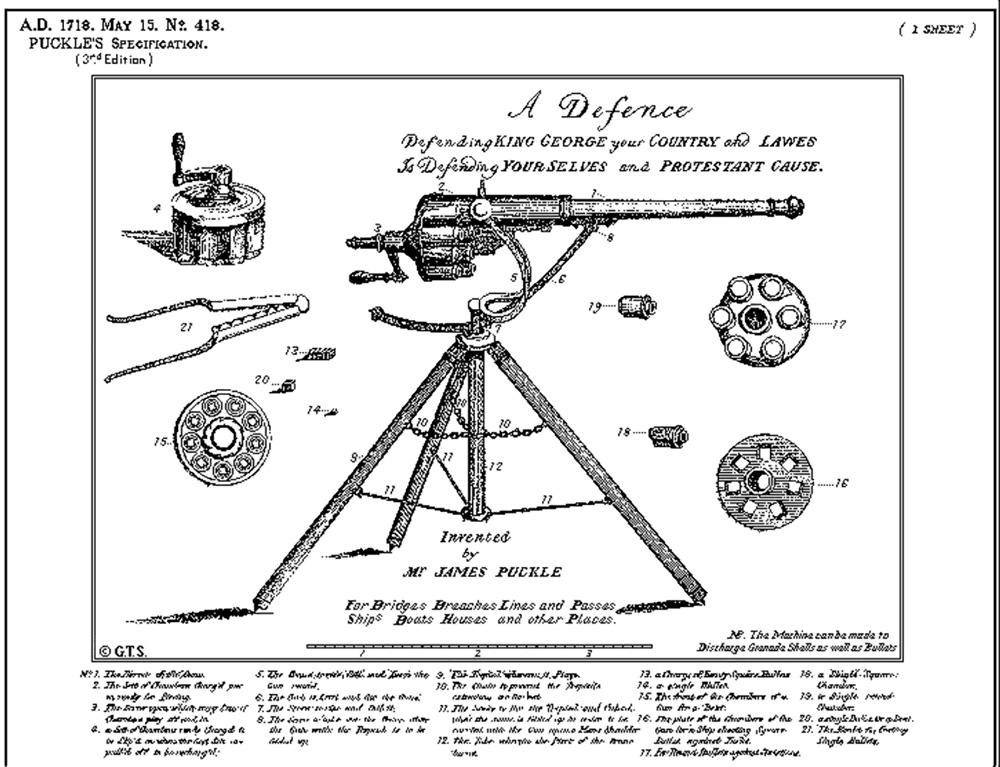No automatic weapons, without industrialization
You need machines to make modern firearms. You can't hand-rifle a barrel. And while a hand-operated barrel-rifling machine can be made, this is not the best.
Et al. for every other thing. Something like 90 machines were needed for the Enfield (iirc).
Plus you need good materials. Springs? You don't build those out of pig iron. Etc, etc. High quality (uniform!) steel.
Precision milled brass cartridges.
Getting cordite and/or smokeless powder - a lot better chemical industry than existed. You're not going to get nitrogylcerine from your salt-peter pit, and your sulfur mines.
People weren't stupid for using muzzle-loaders, when your powder is completely variable, you don't pick a weight and put it into a package, because you'll get different results with different batches. You'd have to be mixing huge batches, proofing them, and then measuring each in different amounts... Whereas you can just add s'more powder if what you've currently got in the bag isn't working well enough.
Corning. Glazing. Etc, etc.
Medieval workers don't even have the tools to do the measuring to get started on some of that stuff. In order to get some of the scales needed, the guy who made the weights and measures for the US had to design a machine to cut the dials - because a human running a machine to cut the dials eventually threw them off because his body-heat changed the graduations*... If they're dealing with 'recipes' then they're not going to be able to do anything fine. You have to be able to measure. And to do that you need to have tools to do it with. You need precision and accuracy, and that's difficult to just whip up in the shop by drawing something.
Plus, you've got problems even in reading schematics. Even in WW2, we had to completely redo the Bofors 40mm schematics, because they weren't precise (they also had to be redone so that they could be mass-manufactured, instead of hand-finished), and Americans couldn't read them (Europeans used the first angle of projection). A schematic is only as good as your ability to read it/understand what it's saying.
If I tell you (via schematics) to put a 1/2" hole in a plate, you've probably got an idea of how you'd do it. But that's only because you're familiar with power drills, and maybe a drill press. It's probable that you don't know how to put spiral grooves on the inside of a tube. My schematics tell you to put a 1:7 twist in the barrel. How do you change that information into reality? If you're a regular Joe, you probably have no clue. Your smith is going to have the same problem.
Or your schematic says, use "AISI-SAE 4130" for this part. Your smith looks up at you and says, "What is that?". Even, "How do I make that?", if you don't know what it is. Did you bring an industrial dictionary? Did you bring ANSI standards with you? Did you bring testing equipment (or calibrations to make testing equipment) to test potential steel recipes to see if they'll qualify?
You could go to Kentucky-style rifles pretty easily (well, with good materials, and be willing to make a some machines/jigs). Past that... things start to get tricky for medieval workers operating without an industrial base.
+1 for user2448131's ideas: revolver and gatling gun - still are going to need a number of things that're a stretch for Medieval technology
* circular dividing engine. That device, purchased in 1841 from Troughton and Simms of London by Hassler, was intended to be hand operated. Its function was to engrave degrees and fractions thereof onto a circular disk with high precision. It was found, however, that the body heat of the operator could measurably distort the spacings between successive graduations.






